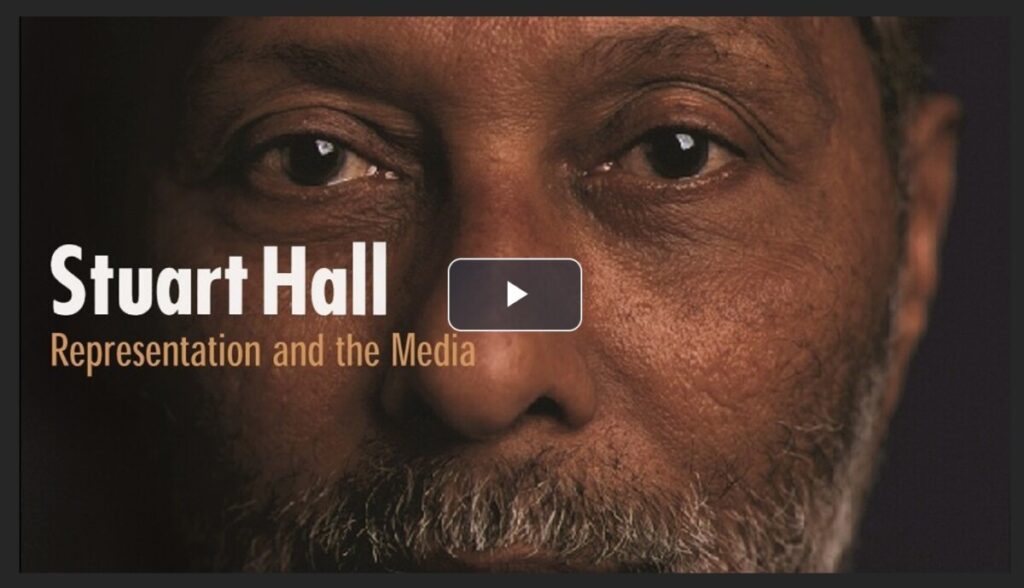Tasks Due Today from Week 4
This Week’s Topics
- Checkin
- Freewrite – Art of Noticing
- Reading Response Feedback/Discussion
- Concept and Vocabulary Review
- Representation & Context
- Reading Response – Representation Theory
- NO CLASS NEXT WEEK!
- Week 5 Homework Checklist
Check-in (15+ min)
Freewrite – The Art of Noticing
Prompt: In your language of choice, write continuously in your notebook for 5 minutes about what you noticed this week. Don’t edit, or correct, don’t stop, just write. Feel free to share or not.
This week’s task brought to you by Saul:
Listen Deeply
In any space you wish, “listen to all possible sounds.” When one sound grabs your attention, dwell on it. Think about what it reminds you of. Consider sounds from your past, your dreams, from nature, from music. How does it make you feel?
ART OF NOTICING
Next Week’s Prompt by Quran :
Imagine what a single person is thinking
Go somewhere (a park, a mall, a gas station, a café), sit awhile, and just look. Pause and imagine what a single person is thinking.
Choose your subject based on observations that consider your subject’s place in the world. Invent a mood and a mind-set, based only upon what you can observe. Imagine the arc of a story and where in that arc this person is right now.
ART OF NOTICING
Meeting request
If you haven’t already, please sign up for a 15 min remote or in-person meeting. If you are unavailable during the meeting slots, please contact me to find another time.
Schedule a MeetingActivities
Below, find the information covered in this session. Complete all of the following activities, videos, and assignments.
1. Reading Response – Visual Rhetoric Feedback and Discussion (30 min)
Let’s take a closer look at the Reading Response – Visual Rhetoric guidelines and our Hypothesis annotations.
If you haven’t already, review your colleagues responses and add a reply!
Review, revise, and repost your reading response based on feedback/questions and discussions with your peers. If you’d like additional feedback from me or if you have any questions or concerns, please contact me.
2. Concept and Vocabulary Review + GAME (30 min)
Let’s review the theories and approaches we’ve explored over the last two weeks with a game to test your knowledge.
Let’s review this Glossary of COMD Theory Terms before we begin. And here are some flashcards.
Here is the game.
3. Representation and Context – Stuart Hall (30 min)
Stuart Hall was a Jamaican-born British sociologist, cultural theorist, and political activist. He looked at the power of mainstream media (advertising, TV, film, etc) to understand the representation of race, gender, class, ethnicity, and religion.
In this 55 minute documentary from 1997, Stuart Hall offers an extended meditation on representation. Take a close look at 11:23 and 36:00 he speaks about representation and “identification” in advertising. Note that this video was created is prior to social media and the internet era that we live in now. Has the media power structure has changed and why/why not?

Make sure you are logged into CUNY SSO (single sign-on) to view.
Theories / Terms
Here are some of the theories and terms associated with Hall’s work.
- ReceptionTheory: This theory asserts that advertising and media are encoded and decoded. The creator encodes messages and values into media, which are then decoded by the audience. Audiences will decode the media differently and not always in the way the creator intended.
- Dominant, or Preferred Reading: how the creator wants the audience to view the advertisement or media.
- Oppositional Reading: when the audience rejects the preferred reading and creates their own meaning. This can happen when content is controversial, or when the audience holds different beliefs or is of a different age or culture.
- Negotiated Reading: a compromise between the dominant and oppositional readings. The audience accepts some of the creator’s view, but also has their own views.
- Representation Theory: There is no true representation of people or events in media. Designers/creators try to ‘fix’ a ‘preferred meaning’ through ideology or stereotyping. Historically, this is driven by people in power.
- Stereotype: are widely circulated oversimplifications of people and groups; a preconceived idea of what a person is like, based on a range of different factors. These factors can involve culture, religion, race, sexual orientation, age, gender, appearance.
- Polysemic: a sign that has multiple meanings
- Myth: a widely accepted meaning of a sign
- Naturalization: in a society, the repeated use of signs shapes their meaning
This 3-minute video breaks down Hall’s Representation Theory:
This 6+ minute video explains Hall’s Reception Theory:
4. Assignment: Reading Response – Representation (2+ Hours)
Follow the assignment guidelines and prompts for Reading Response – Representation.
DUE Wednesday before the next class to allow for feedback.
Resources
NO CLASS NEXT WEEK!
There are no classes Wednesday, Thursday and Friday. I hope you’ll use this extra free time to catch up on any outstanding work or get some rest!
Week 5 Homework Checklist
Below are all of the tasks, big and small, for this week. The due date is Wednesday, 11:59 pm before our next Thursday class. Timely completion of these tasks will contribute to your success in this course.
If you have any questions, don’t hesitate to reach out.




Leave a Reply